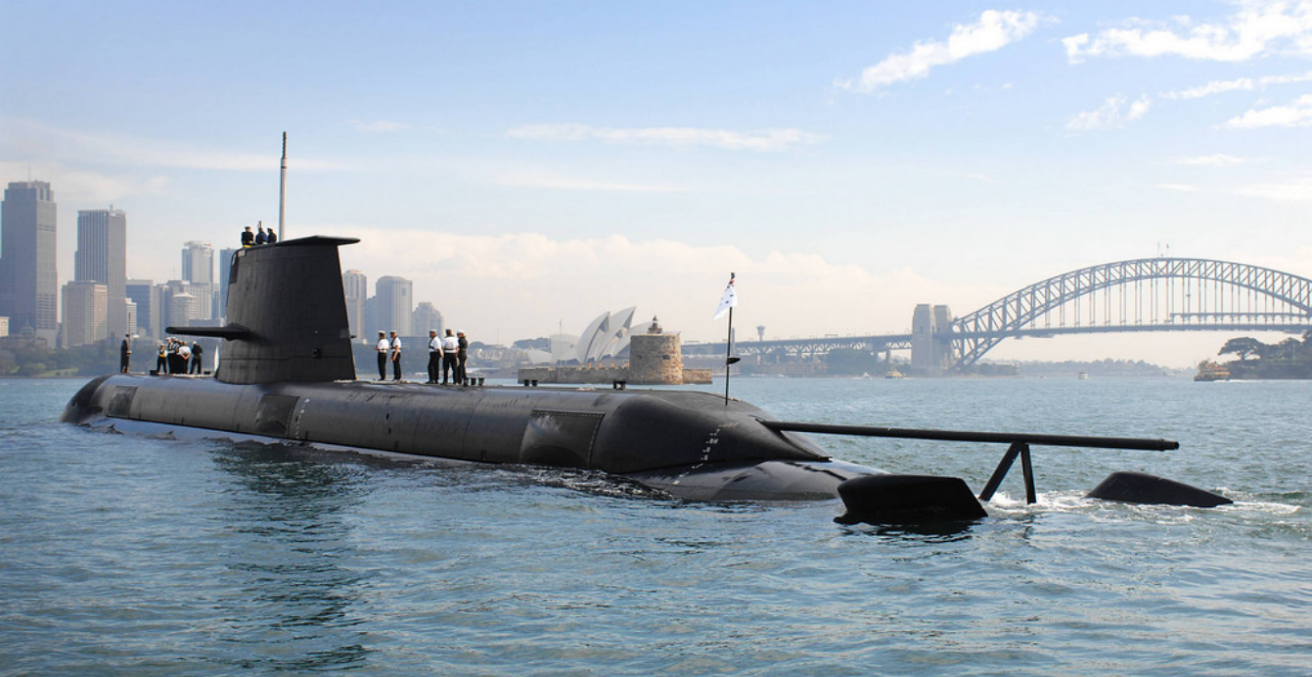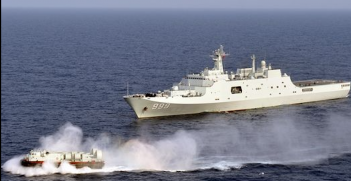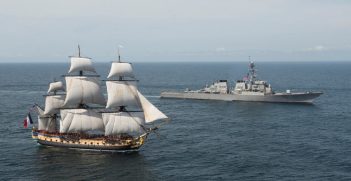The Future Submarine Project: Australia’s Maritime Dreaming

Australian policymakers need to consider what the country’s defence needs are without being driven by a desire for US approval nor the unrealistic fear of Asian invasion.
Australia’s Future Submarine project was initially estimated to cost AUD 50 billion, but recent revelations indicate the 12-submarine fleet may now cost taxpayers upwards of AUD 225 billion, or up to 10 per cent of the entire defence budget. Red flags for the project abound, including data leaks of the French design, problems sourcing experienced Australians for the project and the high probability that the current Collins Class submarines will have to be retired years before the new ones are available. Moving full steam ahead with the current Future Submarine project defies logic.
However, maritime security decisions are not governed strictly by logic. In a recent analysis of Trans-Tasman maritime security threat perceptions, I find that maritime threats – and accompanying solutions – are shaped significantly by a state’s identity, social relationships with other states and desire for prestige. These socially-constructed maritime threat perceptions often make for seemingly irrational policy outcomes. For example, New Zealand’s pacific identity has led Wellington to deliberately prioritise participation in international humanitarian missions over naval vessels that can patrol its exclusive economic zone. In a similar manner, Australia’s maritime dreaming leads it to focus on robust, big-ticket items that may soothe its invasion anxiety, instead of prioritising acquiring, maintaining and staffing equipment that meets actual operational needs.
Australia’s Future Submarine decision-making is a perfect example of the impact of ideational factors on maritime security: it seems illogical until one considers how identity and relational factors inform Australia’s maritime threat perception, and therefore its maritime purchasing strategies.
Consider first that the grand design for 12 submarines built in Australia, along with continuous shipbuilding capacity, stems from a commitment to independent defence of Australia – a commitment that is not rationally defensible. The 2016 Defence White Paper stated that the “self-reliant defence of Australia’s territory remains the highest priority for this Government.” Certainly, the goal is laudable: all countries would prefer to be able to defend their territory without help from allies. But the main perceived threat to Australia today is China. Even if Australia manages to pay for and build its 12 planned submarines, this hardly provides the country with an independent defence against Beijing. China not only has nuclear weapons, but also a large modern navy with more than 70 attack submarines, while new technological innovations are making its underwater fleet harder to detect. Area sea control is not achievable for Australia, but neither is the lesser goal of sea denial. The Australian Strategic Policy Institute estimates sea denial would require a minimum fleet of 24 submarines; at this rate, Australia will not have even 12 in the next two to three decades.
The unrealistic and expensive goal of doubling the submarine fleet is even more incongruous when one considers that the Navy has had serious trouble maintaining and staffing the six submarines it already has. For example, in 2016, the Navy authorised “unprecedented” yearly payments of up to AUD 50,000 for submariners in what has been called a desperate bid to keep crews on the boats. Perhaps tired of the routine embarrassment over the issue, the Navy has now classified the number of Australian submarine commanders and crew. The staffing problem is likely to worsen, because if the replacement submarines are not ready before the current subs are retired, the continuous training needed for submariners will not be available.
However, the Future Submarine decision-making makes more sense when considered in the light of Australian identity and relationships with other states. Part of the issue relates to “invasion anxiety,” a deep-seated fear of invasion embedded in Australian identity. Springing from a recent settler experience, combined with “compulsive retelling of the prophecy of Asian invasion,” Canberra hopes that it would be possible to secure itself against a direct attack on the homeland despite all evidence to the contrary.
Also at play is Australians’ emotional commitment to the United States. With China rising, the Australian government seeks to retain and strengthen its connection to the US; it wants to remain the US’ most trusted junior partner and, more than that, wants the US to value its contributions. This deference to Washington affected Future Submarine decision-making in several ways. The Department of Defence mandated that any proposals be able to accommodate the “hot, heavy, hungry” US AN/BYG-1 combat system, leading to larger, more expensive submarines. No other US ally uses the AN/BYG-1 system; it is not required for interoperability. Proposals also had to incorporate the US Mk 48 Mod 7 CBASS torpedo, despite the fact that its thermal engine is noisier than European-designed electrical torpedos. That these decisions were made before the submarine platform was even chosen indicates that alliance management was prioritised over operational performance. Indeed, it was not until the United States sent a clear signal that it would permit its combat systems to be installed on European submarines that Canberra announced that the French had won the bid. The need for US approval is evident throughout the Future Submarine process.
So what should Australia do? Scrapping a replacement submarine fleet is not the answer, even if Australia cannot achieve full sea denial. Submarines inject uncertainty into the calculations of potential adversaries; they are also invaluable for intelligence collection. However, much less costly “off the shelf” designs can be adapted to Australian needs, in a much quicker time frame, thus avoiding both the projected overspending and the looming submarine capacity gap. Canberra also needs to focus on anti-access/area denial (A2/AD): technological trends make defending against maritime incursions easier and more cost-effective than ever before.
With the Future Submarine project and all major defence projects, Australian policymakers need to consider what the country’s defence needs are, in a realistic way, without being driven by a desire for US approval nor the unrealistic fear of Asian invasion. Domestic political considerations also should not drive purchasing; much has been written about the political calculations of mandating shipbuilding in South Australia.
Instead, the core set of questions guiding defence acquisition should be: What are Australia’s operational needs, what can it afford and how can it best acquire it? Unfortunately, the current Future Submarine project does not provide a rational answer to any of these three questions.
Maria Rost Rublee is Associate Professor of international relations in Monash University.
This article draws from previously published research titled ‘Time to Worry, Mate? The Construction of Maritime Security Perceptions Down Under’ in Volume 32, Issue 3 of Pacific Focus.
This article is published under a Creative Commons Licence and may be republished with attribution.





